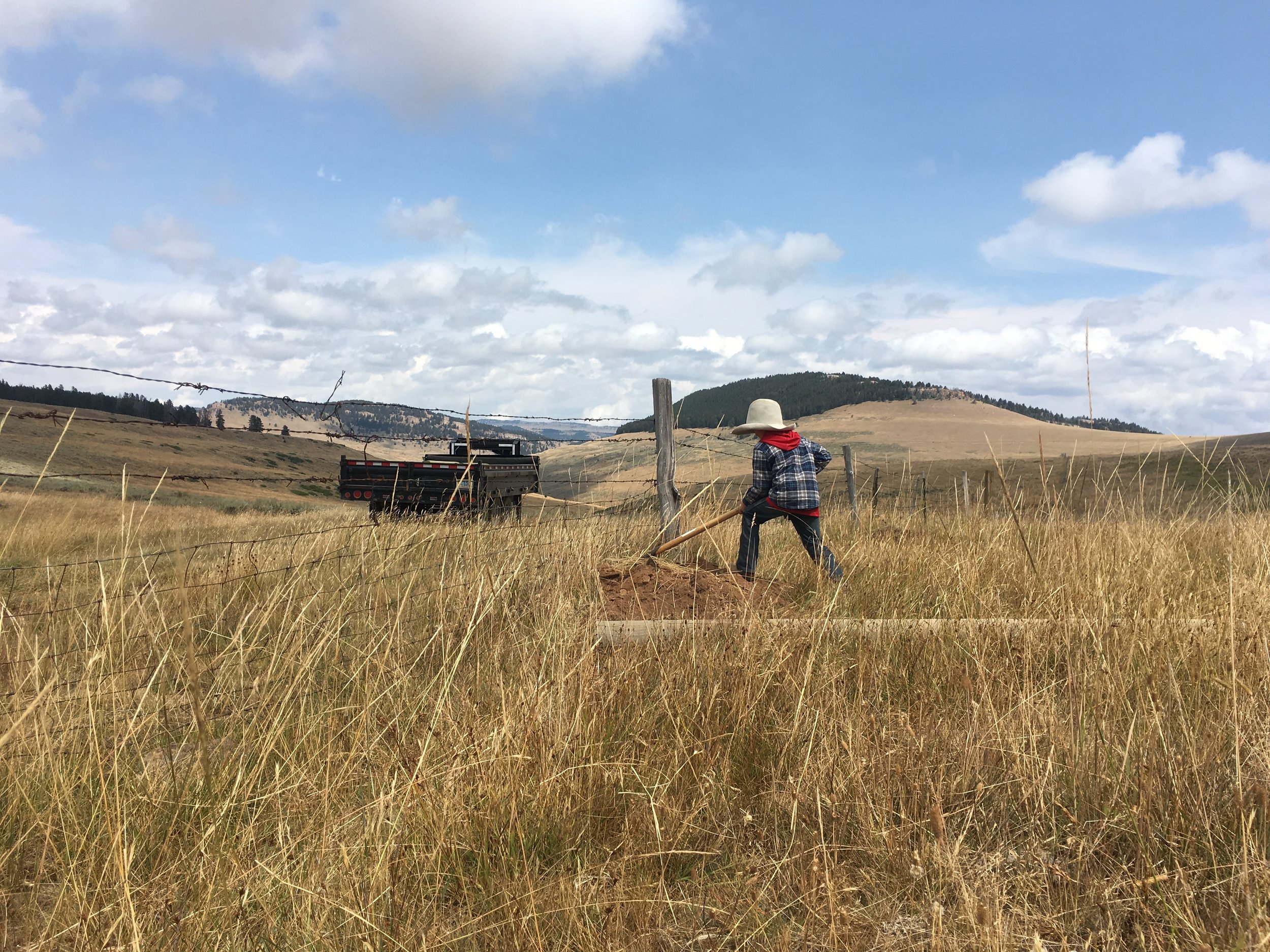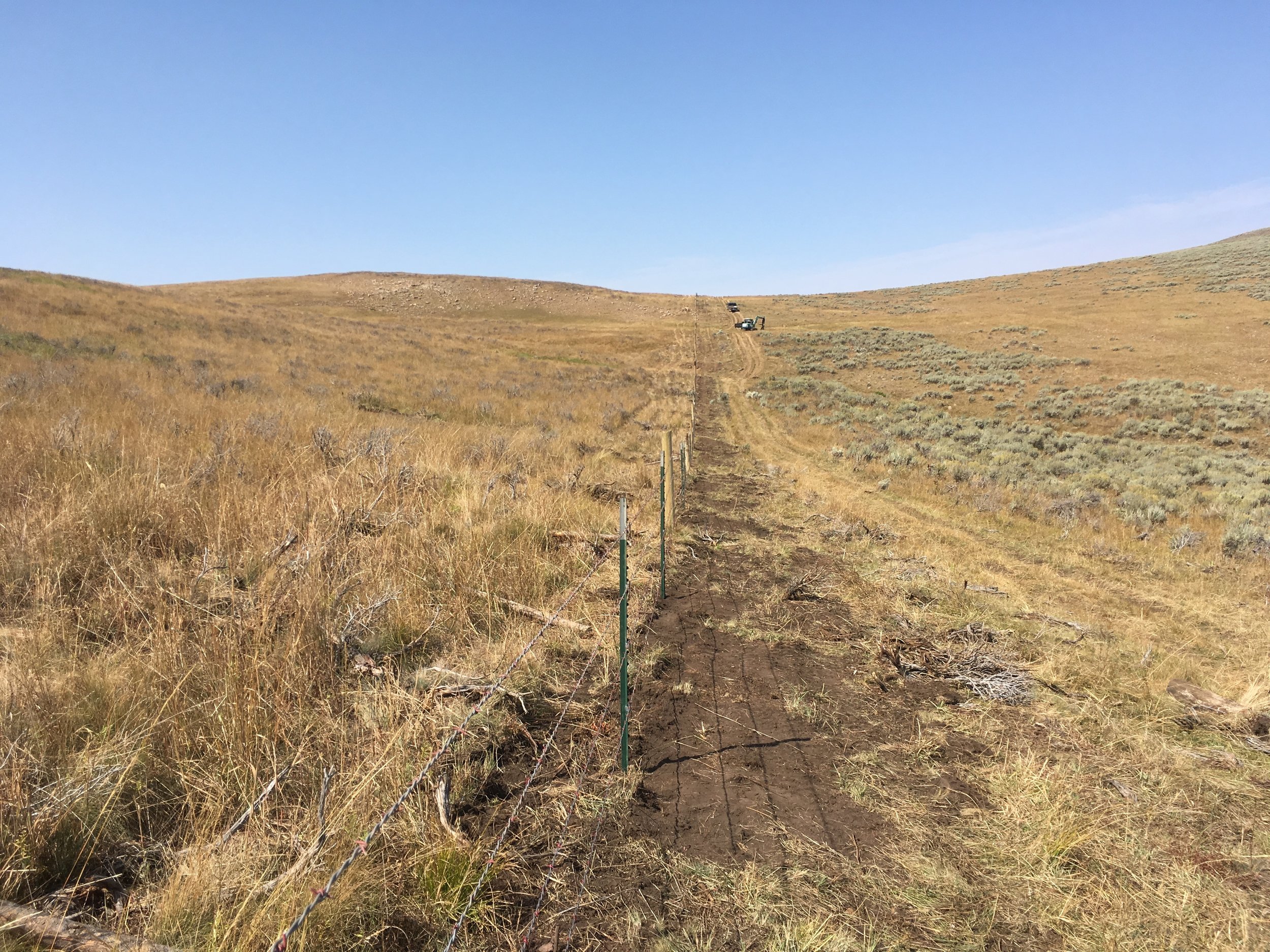Fencing Lessons
The fence surrounding our mountain pasture was put in years and years ago. It requires extensive maintenance, which is becoming more difficult to administer due to the rusty old wire and rotting off posts. Over the past couple weeks we decided to completely replace a quarter mile of some of the worst of the fence. It is in worse shape due, in large part, to being in a place where the snow lays on it heavily during the winter. To help with that we lay it down every fall. We take it loose from the posts and let it lay down on the ground so the weight of the snow won't break the wires. Even so, every year this stretch become more difficult to maintain. The wire breaks instead of bends so splicing is a chore.
We started with braces on each end. Over the winter, we had welded together pipe braces to use in fencing projects. One was set at each end in concrete to support the pressure this fence will receive and hopefully it will last for many years.
Next we set the wood posts. We used the post hole digger on the excavator, but it had a lot of work digging down through the rocky ground. Forty-three wood posts were set in this stretch about 20 feet apart. There is a small portion that does not catch the large drift and we did use fewer woods and some steel "T" posts. We don't use steel posts in the "lay downs" if we can help it because they will bend from the weight of the snow.
Normally, we would just rip out the old fence so we don't have to work around it. However, the cows are in the pasture and we needed to have something there.
Once all the posts were set, we could remove the old wire and posts giving us the freedom to string new wire.
We are trying some new lay down clips that we have never used before. We had always pounded to staples on either side of the wire and dropped a third staple through them to hold the wire in place, but with a way to release it before the snow fell. These new clips hare the same idea, but are attached with screws so they will hopefully be stronger. You can see that one of these days the work was done in a lot of fog.
Then we were able to string the wire, two rolls at a time.
Once the wire was stretched, we laid out fence stays for between each post. These help keep the wires in line and will be all that keeps them from tangling when the fence is laid down this fall.
And just like that, the fence is up. (It was a lot faster to write this.) I know this may be boring if you have done this work before, but I think this carries good insight into the maintenance that is required just to keep the cows from leaving. I am very happy to have this done and hopefully we will continue to replace portions over the next few years.
by Brandon Greet









